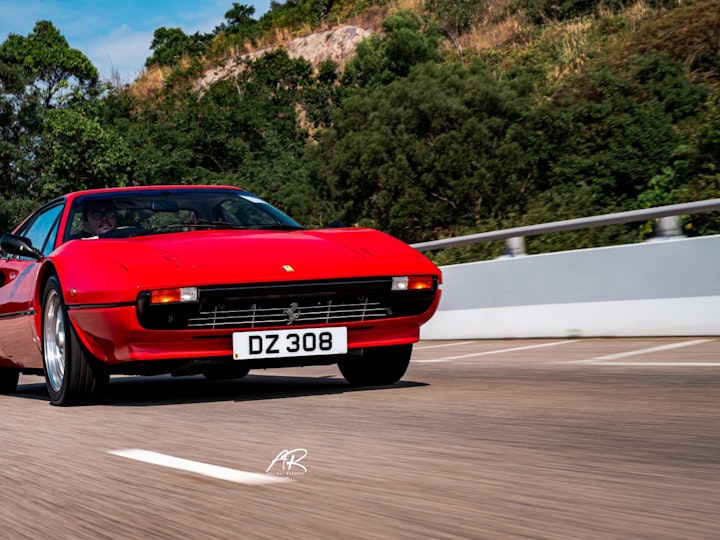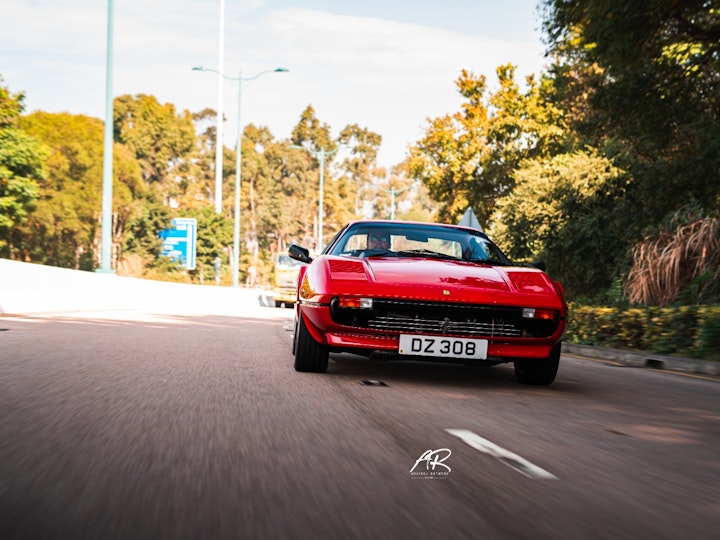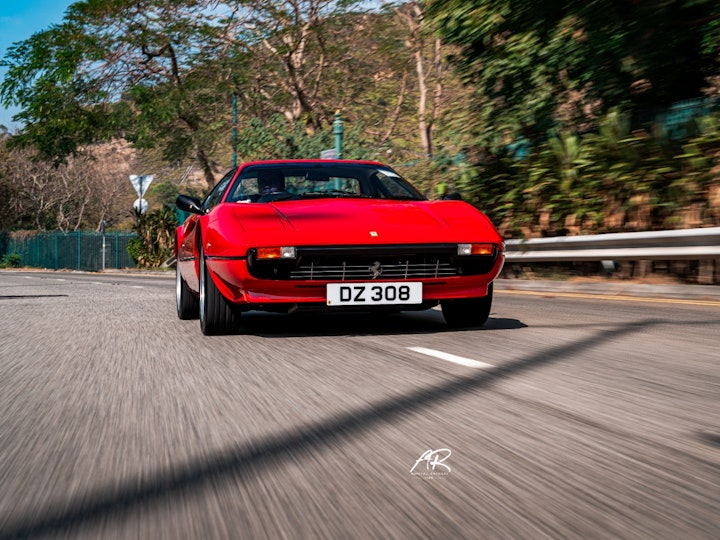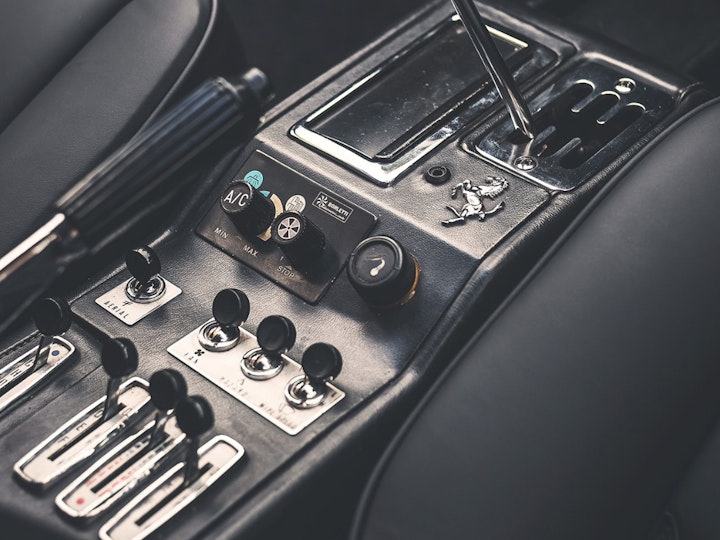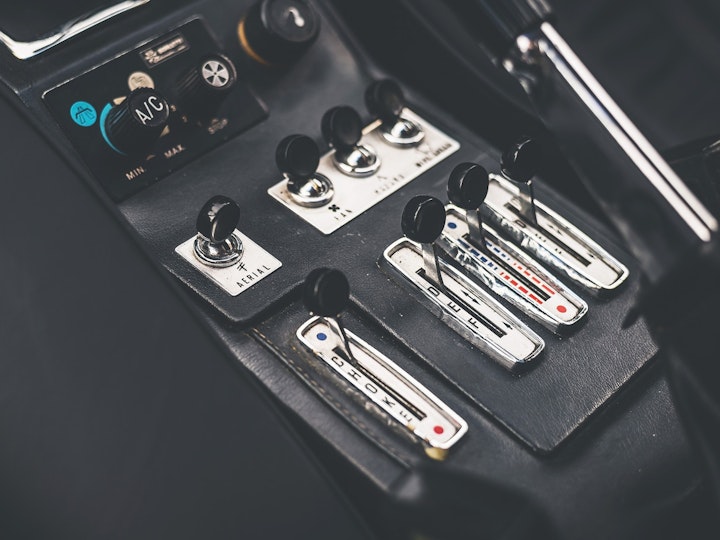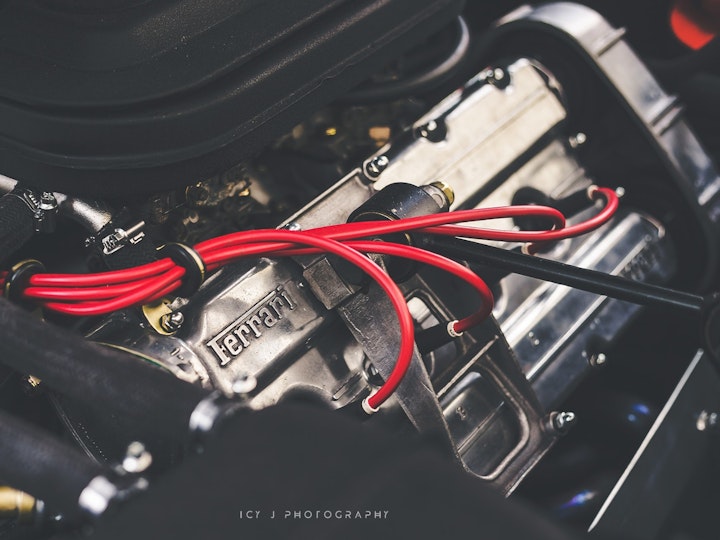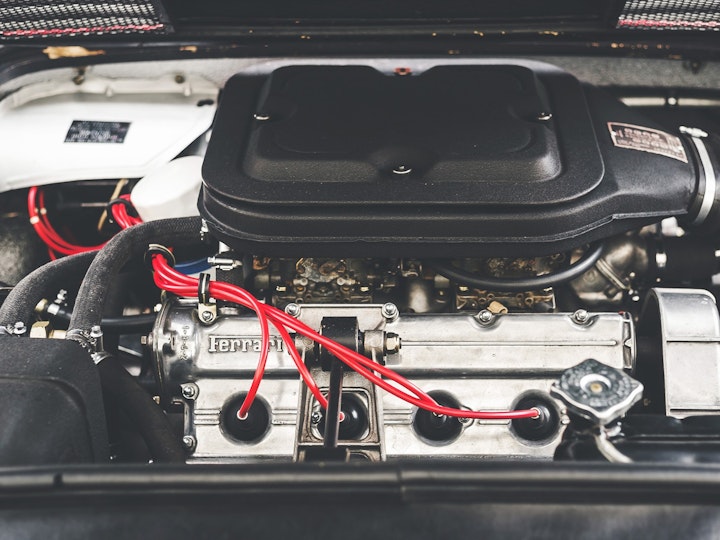Whenever people talk about “80’s poster cars” naturally they refer to the Lamborghini Countach and Ferrari Testarossa. However, one very iconic 1980’s car that is often forgotten in this context is the Ferrari 308. The first contemporary “entry model” by Ferrari during the flamboyant 80’s made the 308 popular both on the streets and on movie screens around the world. Similar to the Testarossa with Miami Vice, the 308 too had its own popular police TV show, Magnum P.I.
Being the genesis of the Ferrari mid-engine V8 line up that remains to be extremely successful today, the 308 was a very important model in Ferrari’s history. While the Dino 206/246 was the first mid-engine 2-seater sports car made by Ferrari to have less than 12 cylinders, the 308 was the first such car to be officially named as a Ferrari (there was also the Dino 308GT4 in between, one of my favorite, but that was a 4-seater and was the only Ferrari to be designed by Bertone, so it was a bit of an oddity).
As the first official “baby” Ferrari, the 308 was an instant success. It had a long production run from 1975 to 1985 and was for the longest time Ferrari’s bestselling model with 12,000 units made – a record only beaten relatively recently with the Ferrari 360 (16,000+ units made). During its 10-year production run there were a number of iterations of the 308. In the beginning from 1975-1977, Ferrari made the 308 with a fiberglass body, known in Italian as the vetroresina version. Only 808 vetroresinas were made before Ferrari started making the 308’s in steel instead. Steel, while cheaper to make, added about 150KG to the car’s body weight. The fiberglass 308 is therefore the most valuable and collectible 308 today due to its rarity and lightweight body.
All early 308’s had a carbureted 2-valve-per-cylinder V8 engine which produced 255hp. In 1980, however, Ferrari had to switch to fuel injected engines due to emission regulation changes. This decreased the power to a mere 211HP and an even more pathetic 203HP for U.S. cars (due to even tighter emission controls in the U.S.). Ferrari rectified this problem swiftly and introduced the quattrovalvole version in 1982, where the fuel injected 308 V8 engines were improved by having 4-valves-per-cylinder. Power output was increased back to 235HP, which was still less than the early carbureted engines. While the carburetor engine is prone to more mood swings and require regular tuning of its carburetors (especially during season/weather changes), it is widely recognized today as being the most raw and pure engine to have, in addition to being the most powerful.
The 308 GTB we have today belongs to our very own team member Alex (@nofishark). He is no stranger to exotic cars, having a collection consisting of McLaren’s, AMG Merc’s, and a Ferrari 360 spider. The 308, however, is especially dear to him as he once had a brand new 308 GTB back in 1981. Like most people at the time, he sold the car after a few years and has regretted since. For reasons I shall not disclose here, Alex has a tradition of not buying second hand cars but decided to make a one-time exception when today’s 308 GTB came up for sale a few years ago. Originally a UK car, this 308 was imported to Hong Kong in 2012. It was acquired by Alex a few years ago but the car was pretty tired and he decided to restore it thoroughly. Rust on the body work was fixed, the interior was redone, a new A/C was installed, suspension and brakes were all replaced, and an engine-out rebuild was also conducted. I am happy to report that after the restoration, the car now enjoys regular exercise on weekends, most of the time with my 328 GTS.
Moving on to the driving – first immediate impression when sitting in the car is that it is quite cramped! Headspace is minimal and the cabin feels narrow. I am able to drive it okay but I can’t imagine how a 6ft+ person would manage. However, any potential claustrophobic feeling would quickly be distracted by those beautiful orange-on-black Veglia Borletti dials and toggle switches. God knows I love those toggle switches (see my Dino 246 GTS blog). The engine start procedure is similar to the Dino 246, where you press the throttle about 2/3 down and turn the keys and release the throttle the moment the engine fires up.
While the 308 pretty much sits right between the Dino 246 GTS we last reviewed and my own 328 GTS, its engine sounds like neither. Compared to its younger and older siblings, its engine sounds a lot more barky. I think Harry Metcalfe of Harry’s Garage was spot on when he said it sounded more like the Ford Escort 4-cylinder rally cars of the era than a V8. It sounds good and potent still, and better than my 328 since it’s on carburetors (carburetors sound better than fuel injection, that is simply a fact as far as I am concerned). However, it has to be said that it does not sound nearly as good as the Dino (to read about my obsession of the Dino’s engine sound please read the Dino’s blog).
The engine feels and pulls strong. It may not be faster than my 328 but the way the carburetor engine pulls and sounds makes the whole experience feel more fast and raw. Everything else is as you would expect. The steering is heavy when the car is slow as there is no power steering, the gear changes are not too different from both the Dino or my 328, and everything is positioned similarly. The clutch is a little bit heavier than both the Dino and the 328, but still comfortable, so I am still searching for that mythical heavy-clutched Italian classic. They say the more powerful cars like the Miura, Countach, and BB512 are the ones with the heavy clutches, I therefore await for the day when I will be offered one for review so that I can finally experience that heavy classic Italian clutch!
All in all, I was impressed with the 308 GTB, which is hardly surprising. The drive feels more raw and pure than my 328, and because its exterior design gives a nod to the BB512, one of my dream cars, I will pick the looks of the 308 over my 328 every day of the week.
Many thanks to Alex and the rest of the team for making this review possible as always!
Alex (http://www.taipanmedia.com)
Dave (Email: david@lemonadeandgiggles.com)
Alex C. (IG: @nofishshark)
Adhiraj Rathore (IG: @supercarsofhongkong)
IcyJ (IG: @IcyJ95)
See our video review here:










